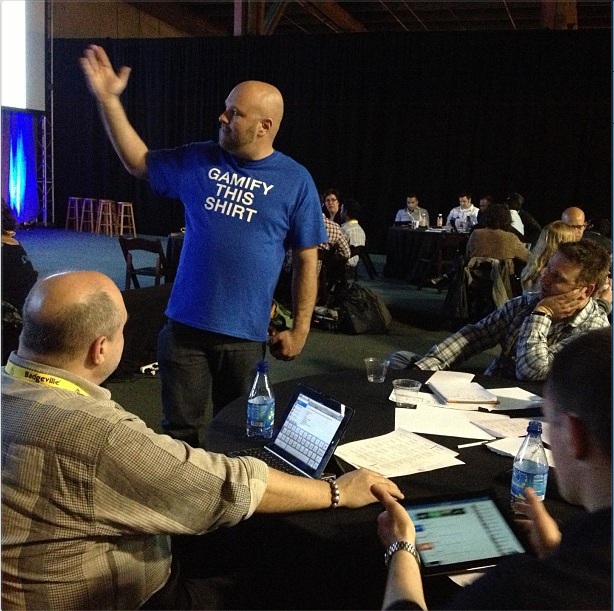GSummit’s Advance Gamification Workshop: A great introductory for newbies and refreshers for veterans
GSummit 2013 is finally here and it has started out with a full house at the Advanced Gamification Certification Workshop facilitated by Gabe himself.
For those who are unfamiliar about the workshop, it exposes attendees how to develop and implement a gamified system through a series of exercises and case studies on great (and terrible) practices. More importantly, it provides participants with the opportunity to obtain feedback from Gabe and his team on their proposed ideas and projects. Subsequently, once a participant’s gamified submission to the Engagement Alliance is successfully reviewed, they would receive the official gamification design certification.
Throughout the session, Gabe gave a detailed presentation focusing on core gamification principles and concepts in addition to utilizing group exercises for attendees to better grasp the discussions. Participants who were new to gamification are given a better grasp on the topic while those who have done the workshop prerequisites were able to grasp the subject more comprehensively.
Here are some of the key ideas that Gabe shared with the audience which would serve as important reminders for readers on gamification as well:
1. Understand goals and objectives: Actively listen to understand the need of others. Don’t be afraid to ask and clarify if there is uncertainty about a subject.
2. Everyone is different: Users are driven by different motivations depending on differing situations. The assumption that everyone wants competition is entirely false, which also shows that each user type are never mutually exclusive to one another.
3. Metrics Is Imperative: Gamification efforts can only be sustained if there is a sense of measurable progress. In turn, the presence of a point system is not just necessarily for end users, it could be a great form of metrics for designers.
4. Mastery reflects value: When products/services incorporate some form of progression to mastery, it delivers both intrinsic and extrinsic value to its users.
5. Rethink previous perceptions: Introspect and identify what game mechanics you may personally like or dislike. Upon doing so, recognize that your personal preferences may actually have an opposite impact to end users.
6. Never a one-time deal: Gamification is a program, not a project. It requires a long term investment and constant reiteration in the long run in order for the organization to benefit from the efforts
For more exclusive coverage on GSummit, follow us @gamification.co and Memecube 2.0 for the latest updates.









Ok how about best attempt to ‘gamify this shirt’ wins ‘this shirt’.
Awesome summary.